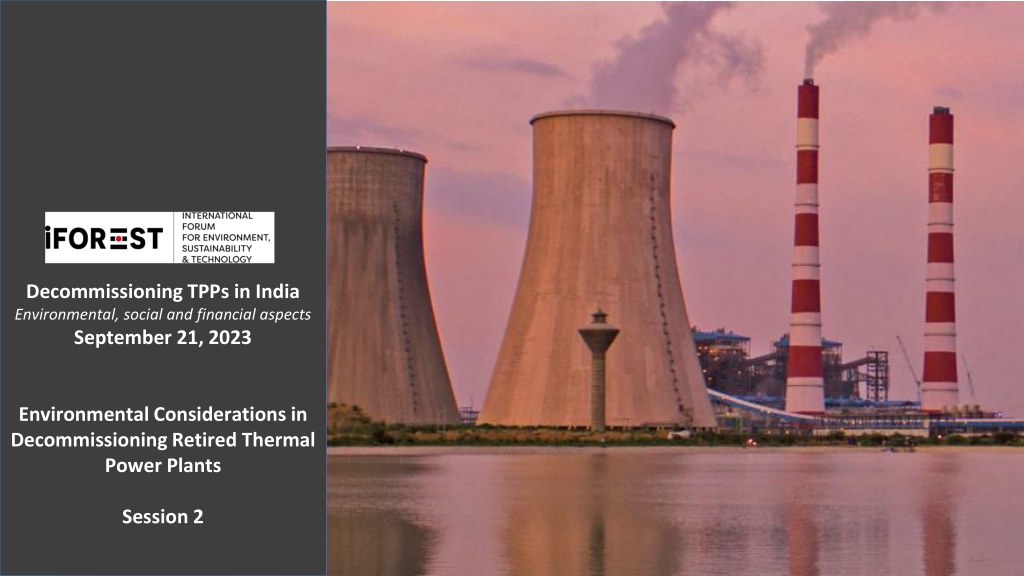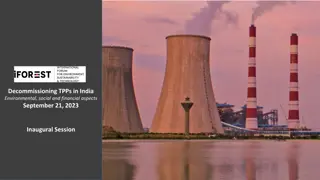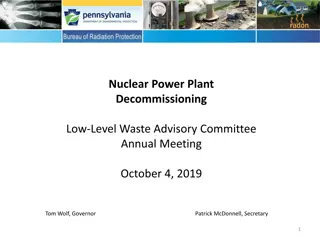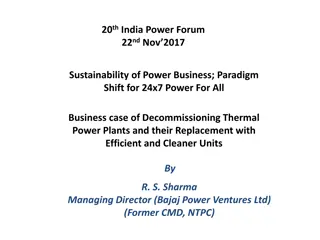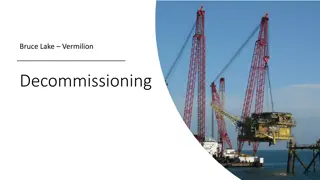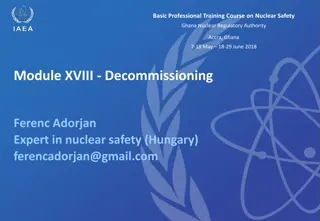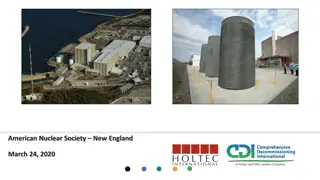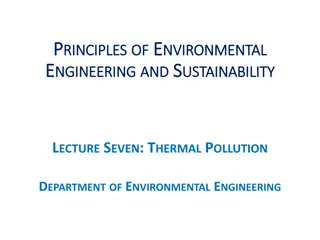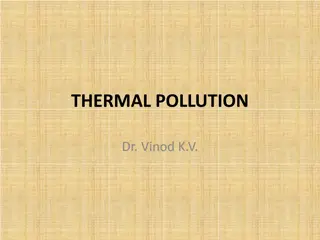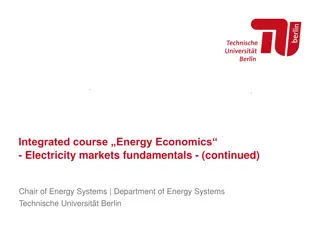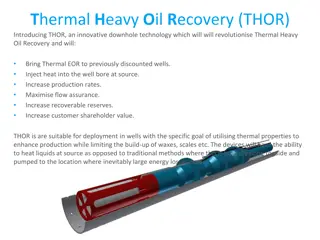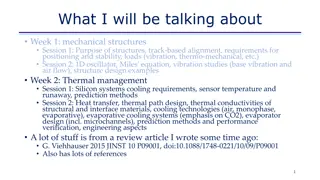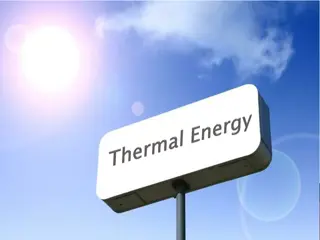Decommissioning Thermal Power Plants in India: Environmental Considerations
Key environmental considerations in the decommissioning of thermal power plants in India include handling hazardous materials, managing e-waste, pollution control during dismantling, and ash pond reclamation. The lack of general guidelines for supervising the decommissioning process has led to the need for a joint committee by relevant authorities to formulate policies and ensure proper implementation. Plant owners must adhere to environmental guidelines, regulatory inspections, and obtain necessary approvals for a successful decommissioning project.
Download Presentation

Please find below an Image/Link to download the presentation.
The content on the website is provided AS IS for your information and personal use only. It may not be sold, licensed, or shared on other websites without obtaining consent from the author. Download presentation by click this link. If you encounter any issues during the download, it is possible that the publisher has removed the file from their server.
E N D
Presentation Transcript
Decommissioning TPPs in India Environmental, social and financial aspects September 21, 2023 Environmental Considerations in Decommissioning Retired Thermal Power Plants Session 2
Environment A key consideration in a TPP decommissioning project Handling and clean-up the hazardous materials utilized, generated and stored during power generation (such as ACM, PCBs, toxic metals, mercury etc.) Managing e-waste, and re-useable chemicals and equipment Managing water & air pollution during dismantling Handling and managing construction and demolition waste Stabilization and reclamation of ash pond Overall clean-up and environmental remediation
Order of Honble National Green Tribunal (South Bench) Order dated March 23rd2021 in the matter Dharmesh Shah Versus Union of India and Others concerning decommissioning Neyveli Thermal Power Station-I in Tamil Nadu. there is no general guideline or monitoring system to supervise the decommissioning process of TPPs the questions need to be addressed in a scientific manner MoEFCC, CEA and CPCB to constitute a joint committee of their own and evolve a policy or guideline as to how the decommissioning of thermal power plant unit has to be carried out including manner of creating mechanism to supervise as to how it is being properly implemented by the power plant and mining area
Environmental Guidelines for Decommissioning a Coal/Lignite-Fired Power Plant (Draft), July 2021 Periodic regulatory inspections Execute dismantling and clean up Set up team for project execution Secure approvals, clearances & consents Prepare Environmental Management Plan Undertake Environmental Impact Assessment Determine future land use In planning and executing a TPP decommissioning project, plant owners must ensure compliance with all relevant environmental and occupational safety statutes, rules and guidelines issues by central, state and local authorities.
Relevant Acts, Rules and Notifications Hazardous and Other Wastes (Management and Transboundary Movement) Rules, 2016 Construction and Demolition Waste Management Rules, 2016 Water (Prevention & Control of Pollution) Act, 1974 Air (Prevention and Control of Pollution) Act in 1981 MoEFCC notifications for fly ash utilization and ash ponds In June 2023, CEA and CPCB issued Guidelines on Design, Construction, O&M and Annual Certification of Ash Ponds. In context of plant decommissioning, the following provisions of become relevant: Statutory permission from relevant regulatory authorities required for abandoning an ash pond. All measure need to be adopted to prevent pollution from abandoned pond. Reclamation of ash disposal facility is to be endured, through complete dewatering, site preparation, and placement of earth cover (300 mm). Area can be vegetated or used for solar or wind power plant installation (following feasibility study, statuary clearances and adequate measures to prevent surface erosion and pollution). Annual certification of reclaimed ash pond and dykes is to be ensure by plant owners and the report submitted.
Strengthening Environmental Guidance Provide clear timelines for action Undertake an environment assessment of retired power plant (instead of a detailed EIA study) Provide clear guidance on developing EMP for decommissioning Ensure that social and community concerns are addressed in the EMP Provide for a unified consent and a single window clearance mechanism Provide guidance on engaging specialized agencies for decommissioning Ensure a stringent monitoring mechanism Introduce a mechanism for final audit and certification Build an incentive for repurposing
